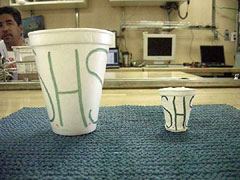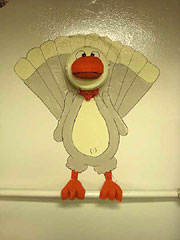

 | |||||||
|
|
Journals 2007/2008Heather Judkins
November 21, 2007 Depth and pressure are intertwined in the world of water and I put those properties to the test with a simple experiment that can be done with the CTD. Many know that depth and pressure are related when dealing with water. This is seen in recreational SCUBA diving, science research, and deep sea exploration. The basic principle is the deeper down in the water column something goes, the more pressure exerted on that object. The air gets "pressed" in organisms as they sink and expands as they come back to the surface. Some organisms have a great ability to handle changes in pressure- some fish have no swimbladder at deep depths while others have the ability to expand and contract their swimbladders to move between different depth layers in the ocean.  So, my question is, which styrofoam cup went down with the CTD to 1000 m? The answer is the one on the right hand side. Styrofoam cups have small pockets of air in them to maintain their insulating capability. When the cup is brought down to 1000 m, the air is compressed!  I would also like to take the time to wish everyone a Happy Thanksgiving! There is a section of the ship that is painted by Brad, a crew member, and it is my greeting to you for the holiday! Marine Science Questions: 1. List three things besides depth and pressure that deep sea animals have to adapt to for survival under 1000m in the sea. 2. What is your favorite part of the Thanksgiving meal? Why? |
||||||